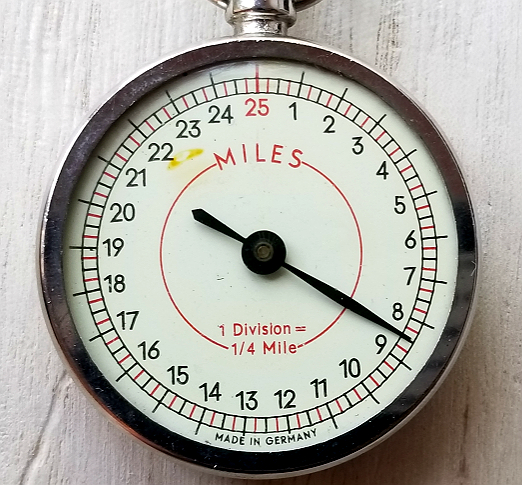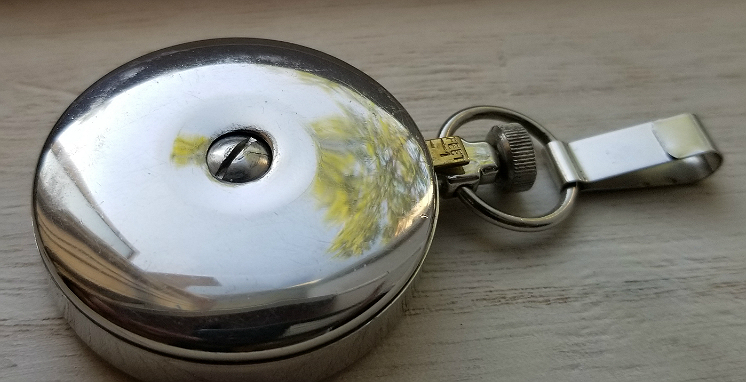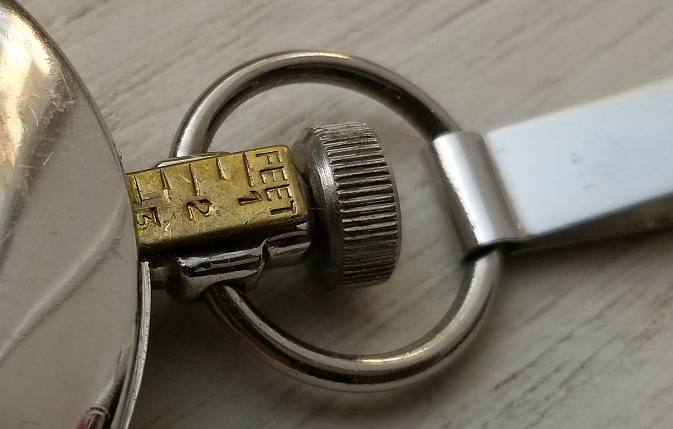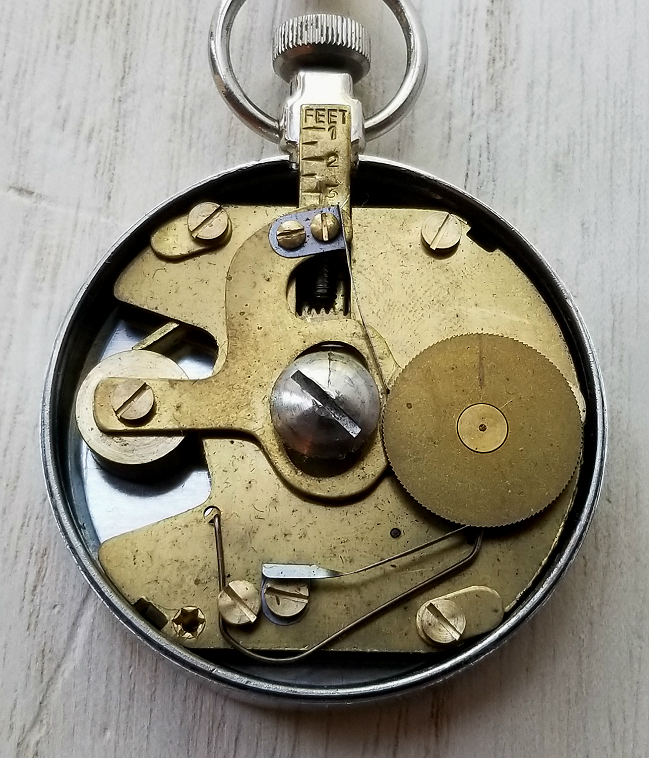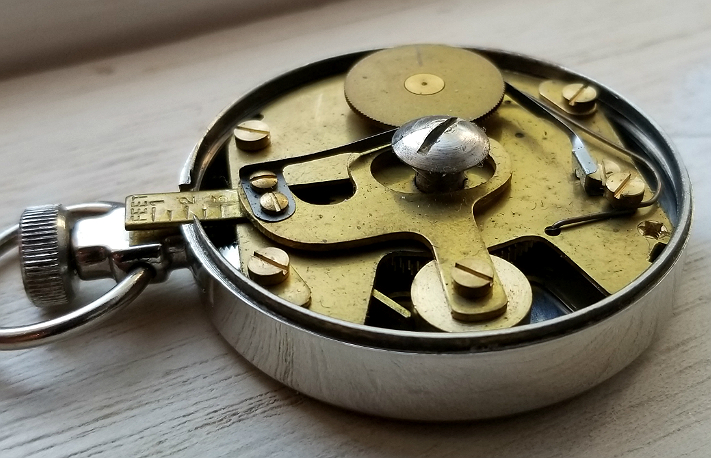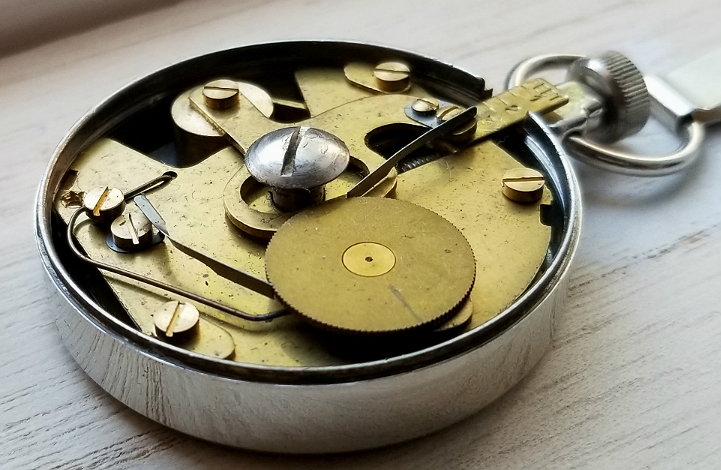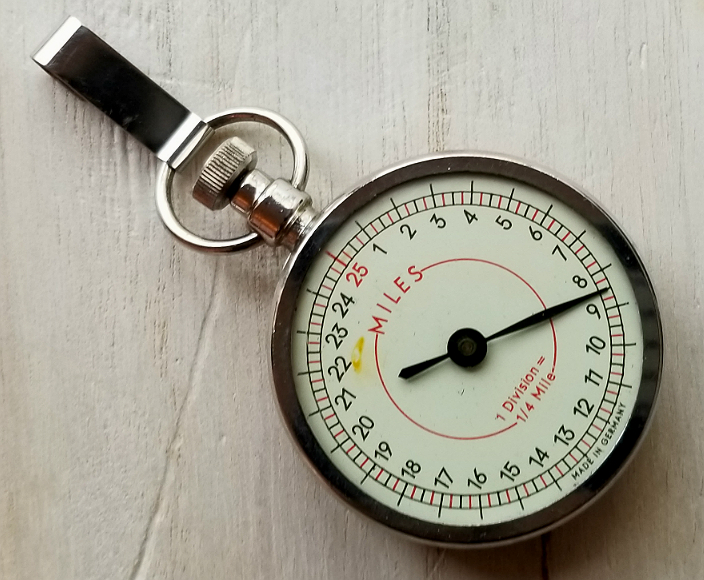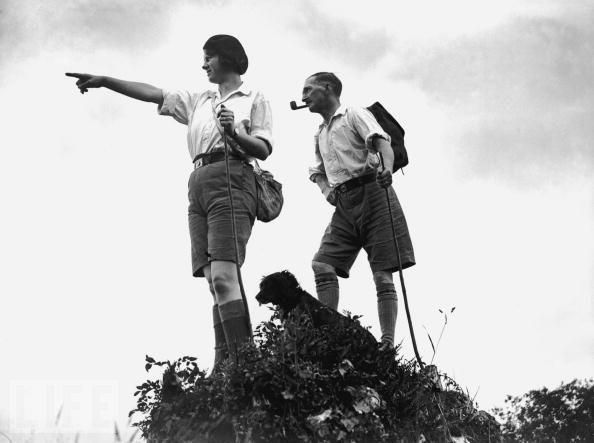Mechanical Pedometer, W. Germany - ? 1960s
Here is a mechanical pedometer, made in Germany. I am assuming West Germany, but not certain. It's a pretty fun thing. Dial is white with a thin "crystal" made from some kind of acetate or other material. Not like a thick acrylic watch crystal. If you press your thumb, it dents inward. You can see it measures up to 25 miles of walking, in increments of a quarter of a mile. It tells you, in case it is not clear, that "1 Division = 1/4 Mile." The black hand is set to zero, for when you start your day or journey, by the "screw" on the back, see below pic. You simply turn it with your fingernail, or coin or anything that engages the screw slot. In the below pic, you can also see the hook for fastening it to your waist, and the "crown." The crown is what sets the length of your stride, so the device can accurately determine the number of miles you walk.
end/
Closeup of the crown and regulator. Turning the crown in either direction will change the length of your stride. To reduce error, take ten steps, measure the distance covered, and then divide by ten to get the length of your stride. This device needs that value in feet. As you turn the crown this way or that, the brass "ruler" moves up or down. You should set the length of your stride at the edge of the case. In this case the stride is set just a bit longer than 3 feet.
The "movement" looks pretty cool. Lots of brass. On the left of the above image at what would be 9 o'clock if we were looking at a clockface, the round mass held by a screw is the weight or maybe pendulum of of the pedometer. As the person walks, it bobs up and down. You can see that the armature it's attached to has a thin metal wire at the 12 o'clock position of the armature. This wire extends down and to our right, and the flat end of this wire engages with some very fine serrations along the edge of the large brass wheel at 3 o'clock. This causes the large brass wheel to turn a little bit.
The more the metal weight at 9 o'clock is allowed to bob up and down, or more precisely stated, the greater the distance allowed of its up and down excursions, the more the large brass wheel will turn, and the greater a distance the device will think you have walked.
How this is regulated is by the pin located just at the top of the metal weight at 9 o'clock. Depending on where you set the ruler, by turning the crown, this will govern the position of the pin, which will govern how far the metal weight can move, and (ultimately) in turn how many miles it thinks you have walked.
Couple more pics above of the movement. I really love the movement.
Pic of the whole device. It makes a pleasant thunk-a-thunk sound as you walk. Low volume, not tinny or bangy sounding. I enjoy the sound.
Thanks for looking.
I hope you will like it.
Alan
Website: Alan's Vintage Watches
